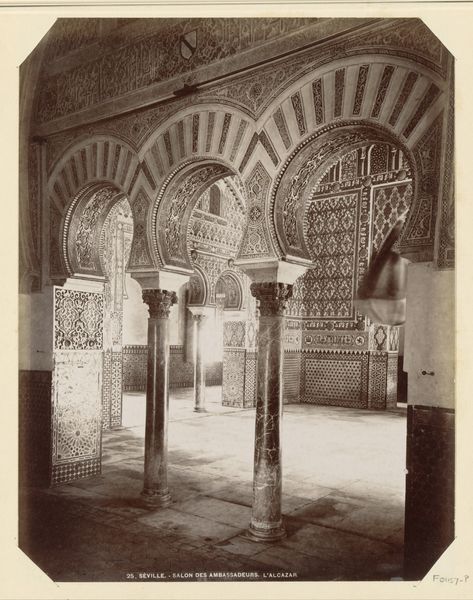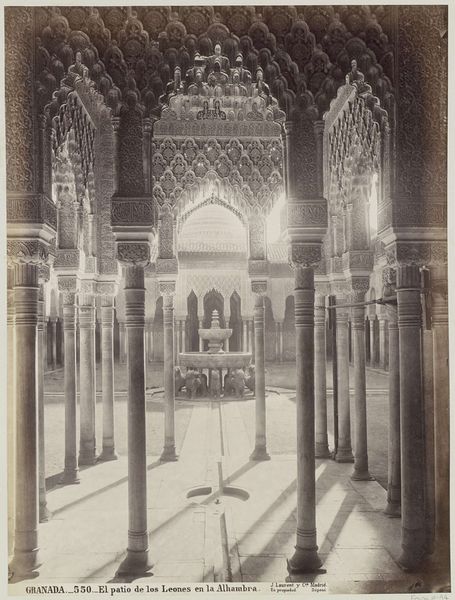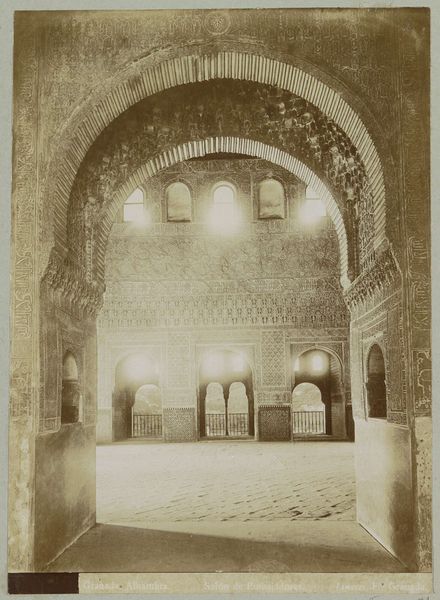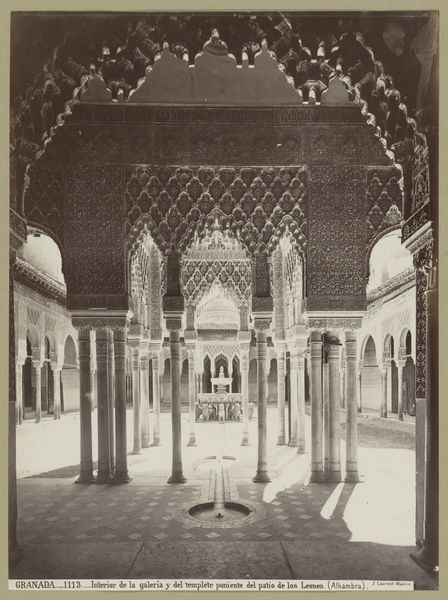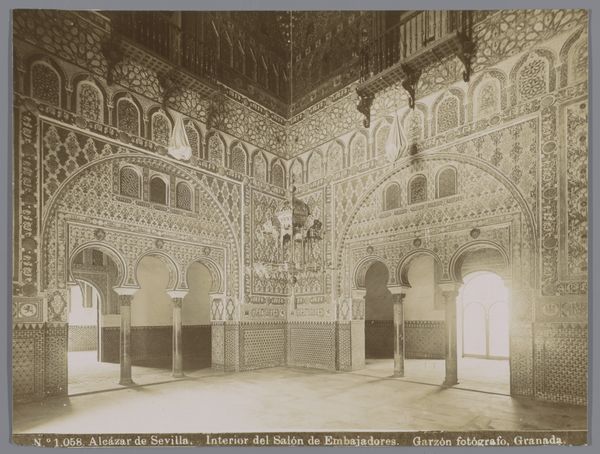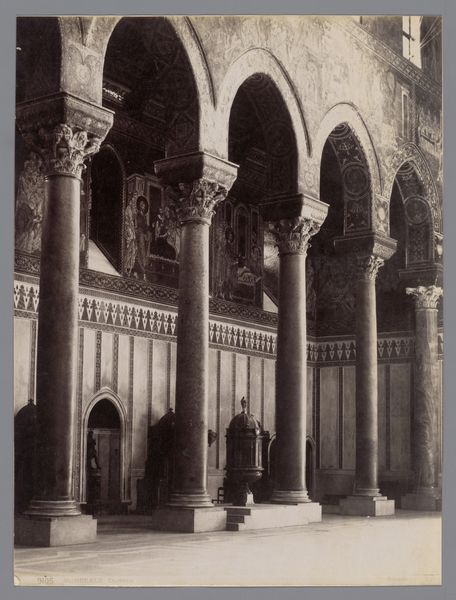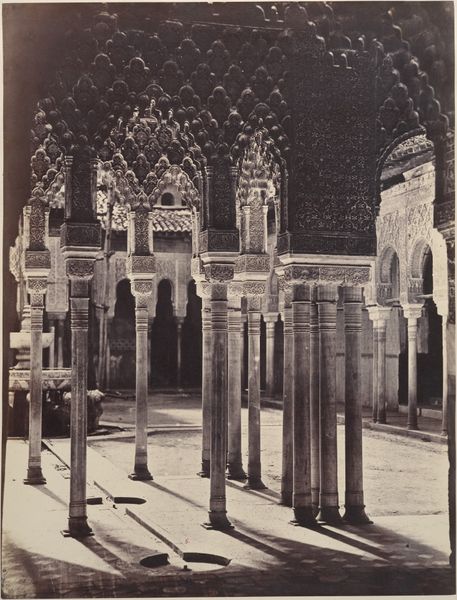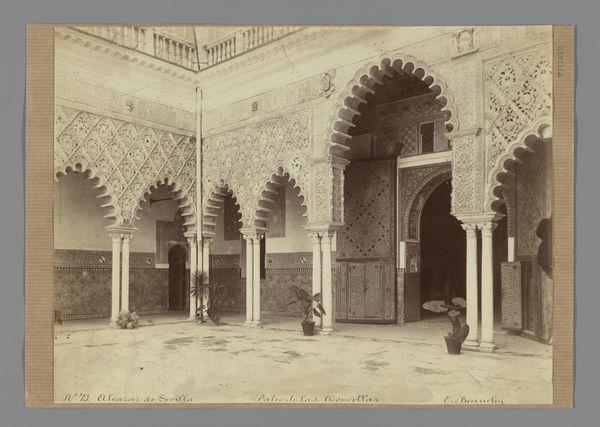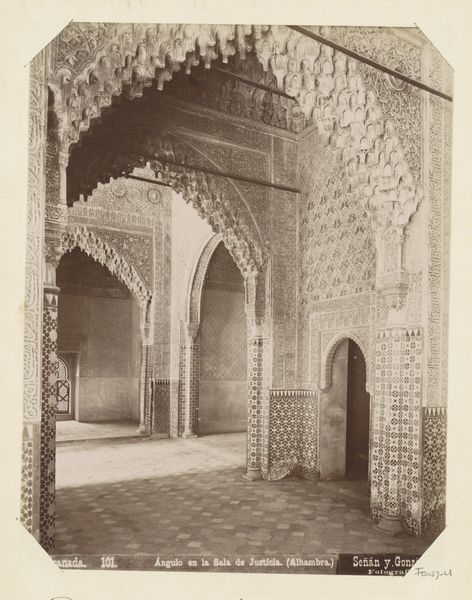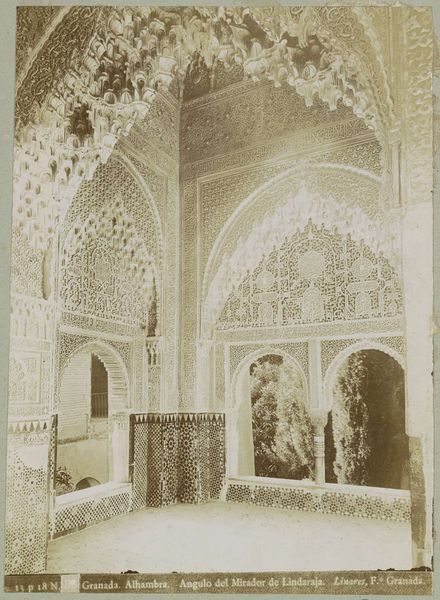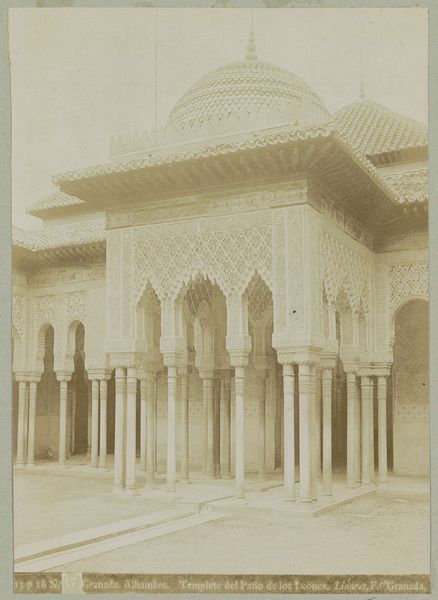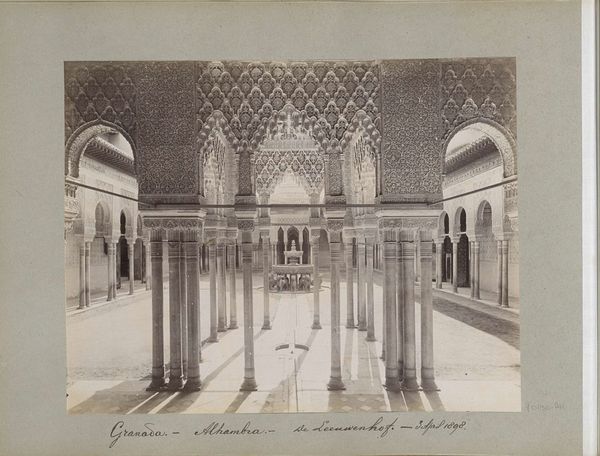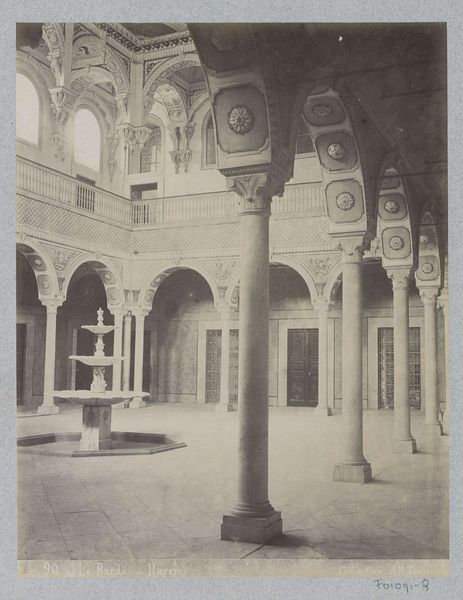
photography, architecture
#
old engraving style
#
photography
#
geometric
#
19th century
#
cityscape
#
islamic-art
#
architecture
Dimensions: height 290 mm, width 234 mm
Copyright: Rijks Museum: Open Domain
Curator: We're looking at a photograph by Emilio Beauchy, taken sometime between 1860 and 1880. It depicts the Ambassador's Hall in the Royal Alcázar of Seville. Editor: The immediate feeling is one of opulent enclosure. It's utterly dominated by pattern; a dizzying effect produced through what feels like limitless geometries. Curator: Indeed. Observe how Beauchy uses the photographic frame itself to create a carefully organized composition. The central marble column anchors the image, while the intricate archways recede into depth. The symmetry and repetition create a rigorous visual order, reinforced by the sepia tones and high contrast, which highlight the textures. Editor: But the “rigor” also strikes me as deeply coded, a space designed specifically for diplomatic encounter under the gaze and the implied power of the Spanish crown and a space undeniably indebted to Islamic design. One is compelled to think of the power dynamics implicit in the building of these “diplomatic” relations, and by whom this type of labor was produced and supported. How does the photographic medium reify and negotiate these loaded social ties? Curator: Note the delicate balance between light and shadow, enhancing the textural contrasts in this architectural record. Each element of this room — from the geometric tile work to the arabesque ornamentation – functions together, reinforcing the harmonic and visually arresting composition. Editor: And don’t the “arresting” patterns on the walls invite you to think of this architecture in relation to empire? Aren't we compelled to analyze the role that design played, and continues to play, in processes of inclusion and exclusion? As Walter Benjamin famously stated, "There is no document of civilization which is not at the same time a document of barbarism." Curator: I would summarize the piece’s aesthetic by its skillful execution in which we observe, through form and symmetry, the artist’s eye constructing a sublime order within this chamber. Editor: Perhaps, but one must never cease to view aesthetic constructions without analyzing whose voices echo the loudest, whose histories get sidelined and repressed. This is where, for me, its power truly lies, less so the visual symmetry.
Comments
No comments
Be the first to comment and join the conversation on the ultimate creative platform.
